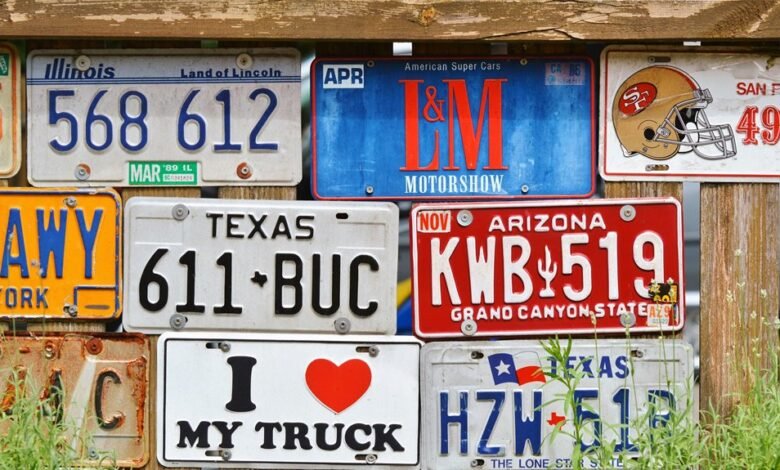Number Plate: Understanding Number Plates on Vehicles

Number plates are essential for vehicle identification and ownership verification. Their design and regulations vary significantly across different countries, reflecting cultural nuances and legal requirements. Each plate carries vital information about a vehicle's registration and history, while personalized options allow for individual expression. Understanding the intricacies of number plates can reveal much about societal norms and responsibilities. What factors influence their design and usage, and how do they impact road safety and community identity?
The Evolution of Number Plates
As the use of automobiles proliferated in the early 20th century, the necessity for a systematic way to identify vehicles became increasingly apparent.
The historical significance of number plates lies in their evolution, reflecting design trends that balance practicality with aesthetics.
Initially simple, plates transformed to incorporate unique identifiers, enhancing vehicle ownership security and fostering individual expression in an era embracing newfound freedom on the roads.
Types of Number Plates Around the World
The diversity of number plates around the globe reflects the unique cultural, legal, and technological landscapes of each region.
Countries offer various styles, including standard, personalized plates, and those with historical significance.
Personalized plates allow individuals to express identity, while others commemorate regional heritage.
This variety underscores the interplay between personal freedom and societal norms in vehicle registration practices worldwide.
The Information Displayed on Number Plates
Number plates serve as crucial identifiers for vehicles, displaying essential information that varies by country and region.
Typically, they include identification codes, which can reveal the vehicle's registration area and owner details. Adhering to specific plate regulations, these codes help streamline identification processes, enhancing road safety and law enforcement capabilities.
Understanding this information empowers vehicle owners and fosters a sense of responsibility within the community.
Conclusion
In the tapestry of roadways, number plates act as both a thread of identity and a shield of accountability, weaving together the stories of countless vehicles. Just as a unique fingerprint signifies individuality, each plate tells a tale of ownership, history, and community responsibility. As they evolve with technology and culture, these identifiers not only enhance safety but also reflect the diverse narratives of those who traverse our streets, underscoring the significance of connection in our shared journeys.





